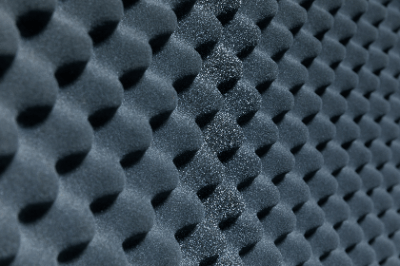What Is a Acoustic Panel?

Acoustic panels are typically installed on walls and other surfaces to enjoy clear music indoors and make it easier to hear another person’s voice when having a conversation.
Sound is transmitted into space as air vibrations, and in a room, the air vibrated by the walls bounces back and is transmitted back into the room. The sound reflected off the walls and transmitted back into the room becomes noise or unpleasant sound, and interferes with the original sound. Acoustic panels can improve the acoustic environment of a room by reducing the amount of sound bouncing off the walls.
By designing spaces with controlled acoustics, various secondary effects can also be expected. For example, using them in studios and theaters that handle sound, improving concentration in conference rooms and learning environments, and protecting patient privacy in hospitals.
Uses of Acoustic Panels
Acoustic panels are used in music studios, halls, theaters, and other places where music is enjoyed. When sound bounces off the walls of rooms where music is enjoyed, the bounced sound interferes with the original sound produced by musical and other instruments. Acoustic panels installed in a room reduce the bouncing sound by absorbing the sound on the walls so that the original sound generated by musical instruments is not affected.
They are used not only in rooms related to music but also in offices, conference rooms, and meeting areas. In an office where many people work, various conversations and sounds of equipment operating are heard bouncing around the room. Acoustic panels can be installed in conference rooms, meeting areas, and other places where important conversations take place to make it easier to hear the other person’s voice.
The same is also true in hospitals and schools where communication between doctors and patients, teachers and students takes place. In addition, the reduction of extraneous sound can lead to improved learning effectiveness and the protection of patient privacy.
Acoustic panels installed in factories and other production sites where loud noises are continuously generated can also contribute to improving the working environment.
Principle of Acoustic Panels
When vibrating air enters the panel as sound, friction with the soft material of the panel reduces the vibration of the air. This friction reduces the vibration, thereby reducing the amount of sound that would normally bounce off the walls and be transmitted back into the room.
Some acoustic panels have a finely textured surface. This is intended to increase the amount of air absorbed by increasing the surface area. Fine holes and fine fibers also have the effect of diffusing and absorbing sound within a small space.
It is important to note that acoustic panels vary in the frequencies they can easily absorb, depending on the sound absorbing material and the way the layers are made. It is important to clarify the sound you want to absorb with acoustic panels, and then select sound absorption panels that have a large reduction effect.
Other Information on Acoustic Panels
Differences Between Sound Insulation and Soundproofing
In addition to sound absorption, there are other terms, such as sound insulation and soundproofing. Although the terms are similar, they have different meanings.
What Is Sound Insulation?
Sound insulation is the act of blocking air vibrations so that they are not transmitted. To reduce vibration, dense and heavy materials are used. Examples include steel plates, concrete, and plasterboard.
What Is Soundproofing?
Soundproofing is the process of preventing sound from entering from the outside or leaking from the interior to the exterior. Specifically, it is a combination of sound absorption and sound insulation. It does not occupy a specific effect, like sound absorption or sound insulation, but refers to the concept of reducing the intrusion or leakage of sound.
For effective soundproofing, it is important to combine the sound absorption described here with sound insulation using heavy objects.